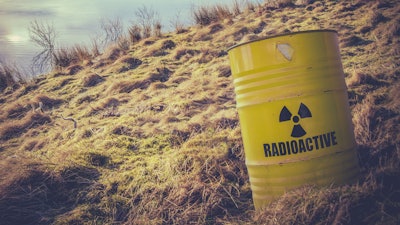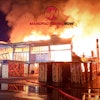
With the rise of more efficient and cheaper forms of energy generation, nuclear power plants are shutting down all over the world. Natural gas, wind, and solar power are now providing cleaner, renewable sources of energy for companies and organizations across all types of industries.
Aging atomic reactors are no longer safe or reliable, and require more frequent and costly repairs. In one year alone, 2,000 to 2,300 metric tons of nuclear waste are produced, which is so hazardous it needs to be monitored for 100,000 years after being disposed of. How to best dispose of this nuclear waste has been a major topic of concern and debate, with a finite resolution yet to be determined.
Radioactive Waste Disposal Methods
The most well-known method is to secure waste in specially-made radioactive shipping containers and very carefully transport them to dispose of the waste in rock far below the earth’s surface. However, there are several alternative creative methods that are currently being discussed by experts in the field.
For instance, salt and granite formations have typically been suitable for the burial of waste, but recently, studies of the hydraulic properties and chemical makeup of Opalinus clay have shown it to be an effective geological barrier, with the capacity for self-sealing and low hydraulic conductivity.
Plutonium, a source of over one third of the energy produced in most nuclear power plants, has long been used in nuclear applications, and new research into its chemical behavior is revealing more about this heavy element.
A team of researchers at Florida State University found that a plutonium-organic hybrid compound was actually similar to compounds made with lighter elements; this is helping experts better understand the properties of plutonium in order to create materials to trap it.
A process called vitrification could also revolutionize waste disposal; this method involves melting radioactive material with glass to create an efficient storage container that could be stored underground for millions of years. C
urrently, however, the United States Nuclear Regulatory Commission only approves the disposal of nuclear fuel rods through storage in pools or in concrete containers in nuclear facilities, both of which present risks. Storing the rods in pools means relying on the technology of cooling systems, which, if they fail, cause radioactive waste to be released.
Natural disasters such as earthquakes are also a concern, as unstable environments could lead to radiation leaks. Experts also take into consideration the possibility of terrorist attacks or bombings, which could be a catalyst in the release of hazardous material. The vitrification process would greatly diminish these risks and ensure a safer and long-lasting disposal solution.
Radioactive Waste Storage Locations
With these new and creative radioactive waste disposal methods also come the need to inform future generations of hazardous waste locations. One bizarre yet fascinating idea is to engineer cats to change colors when they are near buried radioactive waste, alerting humans even thousands of years from now to leave the vicinity. This idea arose in the 1980s, when scientists and linguists focused on finding a reliable method to communicate danger to our descendants, who may not understand our current written languages.
Though there is surely a vast amount of information yet to discover, these creative solutions are propelling further research into the best ways to dispose of radioactive waste, and the strides being made today are helping to ensure a safer planet for us and future generations.
Companies such as Frontier Technology Corporation in Xenia, Ohio are helping in the effort of safely handling radioactive materials with protective containers and custom neutron shielding.























